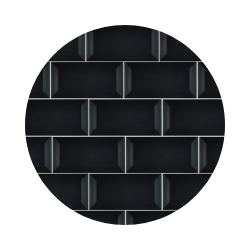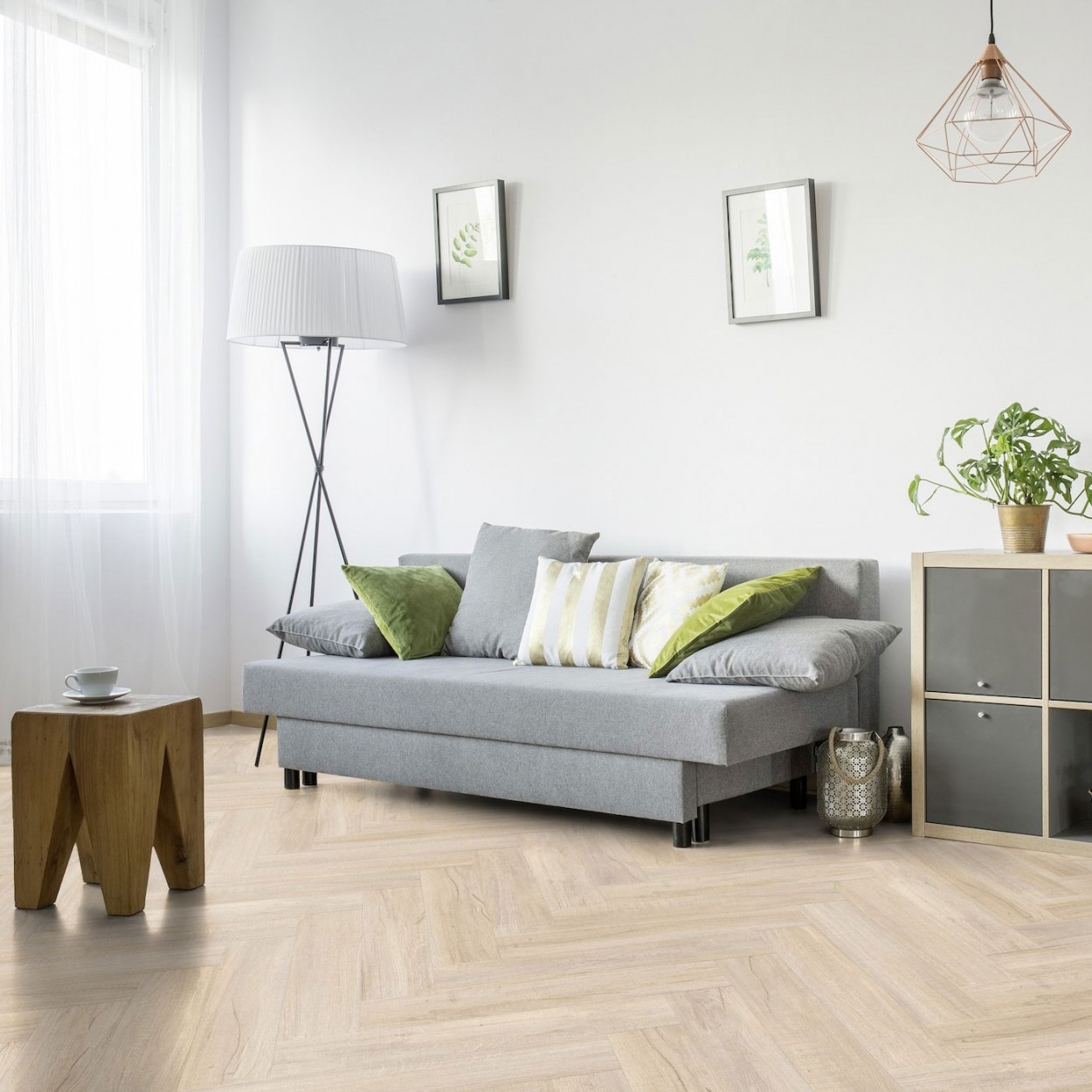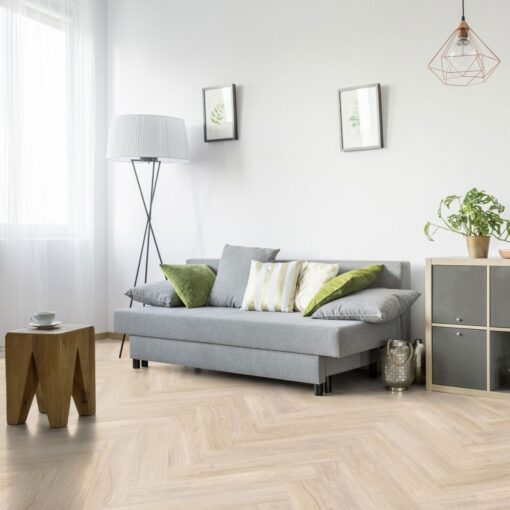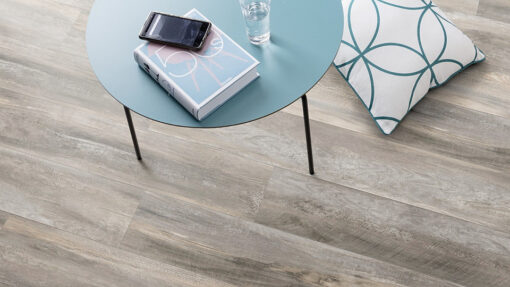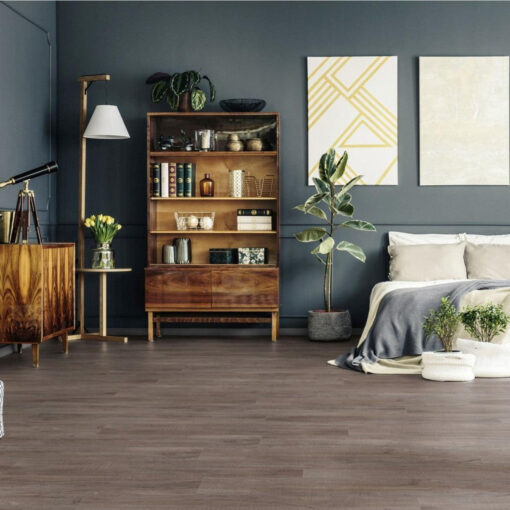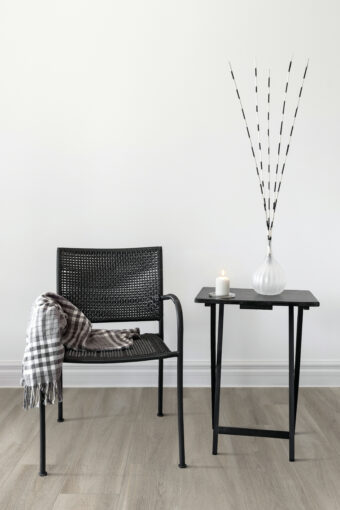Are you renovating your home or office space? Perhaps you are building your dream home? If so, you are most likely thinking about flooring.
In this guide, we’ll explore why you should consider Vinyl for your kitchen, bedroom, bathroom, office, living room or business premises. Discover everything you need to know about vinyl flooring, from installation to cleaning, and compare it with wood flooring to help you make the best choice.
Table of content:
1. What is Vinyl Flooring?
2. Benefits of Vinyl Flooring
3. Vinyl vs. Wood Flooring
4. How to install Vinyl Flooring
5. How to install Wood Flooring
6. How to clean Vinyl Floors
7. How to clean Wood Floors
8. Can you install Vinyl over Wood Floors?
What is Vinyl Flooring?
Vinyl flooring is a synthetic product made from polyvinyl chloride (commonly called PVC). It mimics the appearance of natural materials like wood, stone, and tile, and is available in options including sheets, tiles and planks. Vinyl flooring offers a durable and stylish alternative at a fraction of the cost. Often compared to laminate flooring, it differs in that it is made from synthetic materials rather than wood, making it a more cost-effective flooring solution.
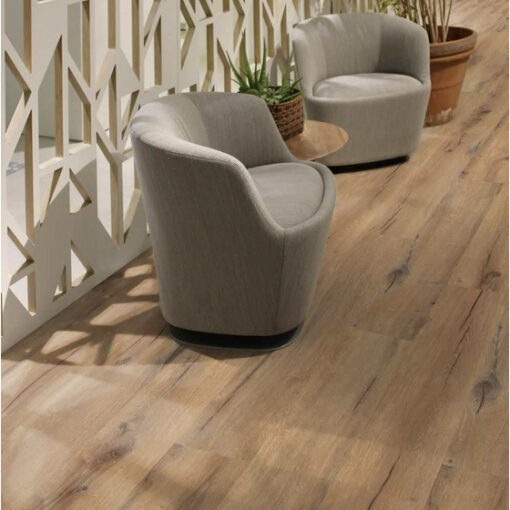
Above: LVT Creation 30 Cedar Brown
Benefits of Vinyl Flooring
- Increases Home Value: High-quality vinyl flooring can enhance the appeal of your home, adding to its market value.
- Easy to Install: With options like peel-and-stick vinyl floor tiles, installation is straightforward and can be a DIY project.
- Easy to Clean: Minimal maintenance required; regular sweeping and occasional mopping keep them looking great.
- Low Maintenance: Unlike wood flooring, vinyl does not need frequent refinishing or special treatments.
- Highly Resistant to Daily Wear and Tear: Most vinyl floors come with a specialized wear layer, making them resistant to scratches and dents.
- Heat Conductive: Vinyl flooring works well with underfloor heating systems.
- Seamless Look: Provides a seamless and cohesive appearance, enhancing the overall aesthetic of your space.
- Cost-Effective: Budget-friendly and long-lasting, saving you money in the long run by reducing the need for replacements.
- Range of Styles and Designs: With a variety of styles and designs, you can find vinyl flooring that perfectly matches your taste and decor.
- Long-Lasting: If installed correctly and well-maintained, vinyl flooring can last upwards of 20 years, making it a great material for high-traffic areas.
- Water Resistant: Vinyl flooring can withstand moisture and liquid spills, making it an ideal option for kitchens and bathrooms.
Vinyl vs. Wood Flooring
While both vinyl and wood flooring have their benefits, they cater to different needs. Wood flooring, known for its natural beauty and longevity, can add significant value to your home but requires more maintenance and is susceptible to moisture damage. Vinyl flooring, on the other hand, offers a wide range of designs that can replicate the look of wood (wood-look / wooden floor tiles), without the drawbacks.
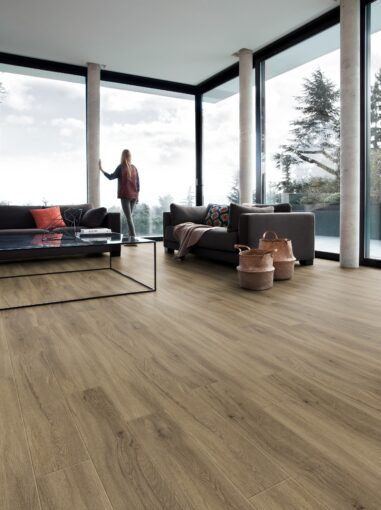
Above: LVT Creation 55 Quartet
How to install Vinyl Flooring
Installing vinyl flooring can be a DIY project if you follow these steps:
- Prepare the Surface: Ensure the subfloor is clean, dry, and level.
- Measure and Cut: Measure the area and cut the vinyl to fit, leaving a slight gap for expansion.
- Adhere the Vinyl: For peel-and-stick vinyl floor tiles, remove the backing and press firmly onto the floor. For sheet vinyl, apply adhesive as per the manufacturer’s instructions.
- Seal the Seams: Use a seam sealer to prevent water from seeping through the gaps.
How to install Wood Flooring
Installing wood flooring requires more precision and tools. Here’s a brief overview:
- Acclimate the Wood: Let the wood planks acclimate to your home’s humidity for a few days.
- Prepare the Subfloor: Clean and level the subfloor.
- Lay the Underlayment: Install an underlayment to reduce noise and add a moisture barrier.
- Lay the Planks: Start at the longest wall, placing planks with a tongue-and-groove system, and secure them with nails or adhesive.
- Finishing Touches: Trim the edges and install baseboards.
It is recommended that you consult a professional when installing wood flooring.
How to clean Vinyl Floors
Maintaining vinyl flooring is simple:
- Sweep Regularly: Remove dust and debris with a soft broom.
- Mop Occasionally: Use a damp mop with a mild detergent. Avoid using abrasive cleaners that can damage the surface.
- Wipe Spills Immediately: Prevent stains by cleaning spills as soon as they occur.

Above: Creation 30 Cedar Pure
How to clean Wood Floors
Wood floors require more careful maintenance:
- Dust Daily: Use a soft broom or a microfiber mop.
- Damp Mop Weekly: Use a damp mop with a cleaner specifically designed for wood floors. Avoid excessive water.
- Polish Occasionally: Apply a wood floor polish to maintain the shine and protect the surface.
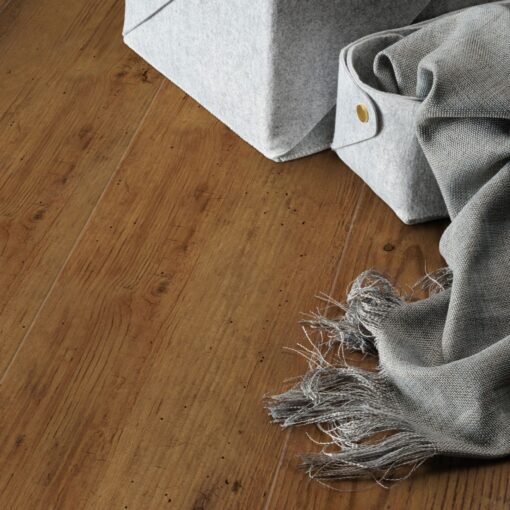
Above: Creation 55 Michigan
Can you install Vinyl over Wood Floors?
Yes, you can install vinyl flooring over wood floors, provided the wood is in good condition. Here’s how:
- Inspect the Wood Floor: Ensure it’s clean, dry, and free of damage.
- Lay an Underlayment: This provides a smooth surface and additional moisture protection.
- Install the Vinyl: Follow the standard installation process for vinyl flooring.
Vinyl flooring offers an excellent balance of aesthetics, durability, and cost-effectiveness, making it a popular choice for modern spaces. Whether you’re considering an upgrade or a new installation, understanding the benefits and proper maintenance of vinyl flooring will ensure your floors look great and last for years. Compare it with other flooring options to see which best suits your lifestyle and budget, and enjoy the beautiful transformation of your space.
If you haven’t already heard, Tiletoria is currently running an up to 50% OFF SALE on Luxury Vinyl Flooring. Check it out here:
Need advice on how to choose Vinyl Flooring? Let Ryan and Deon help you:
Need inspiration? Ryan and Deon explore Wood Look tiles for Winter:
Browse our range of Vinyl Flooring on promo now:
-
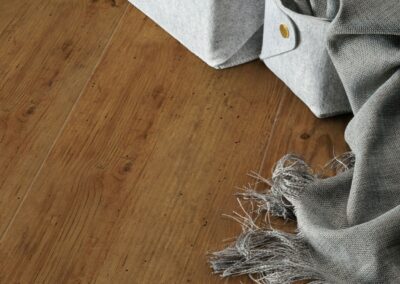
Creation 55 Michigan
-
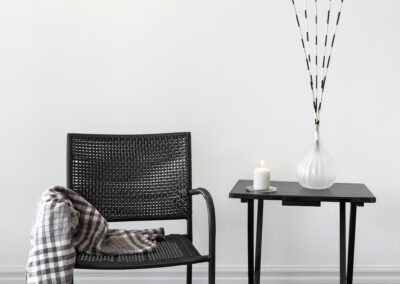
Creation 30 Bostonian Oak Beige
-
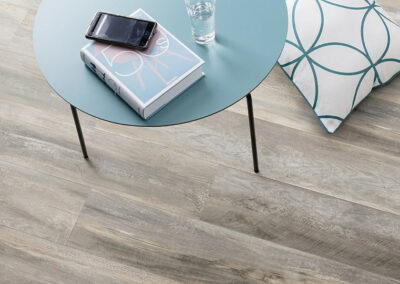
LVT Creation 55 Trend Paint Wood Taupe
-

gerflor creation 55 trend – cedar pure 230 x 1500 mm
-
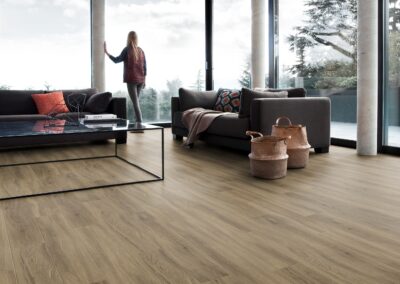
LVT Creation 55 Quartet
-

LVT Creation 30 Cedar Brown
-

Creation 55 Clic Oxford
-
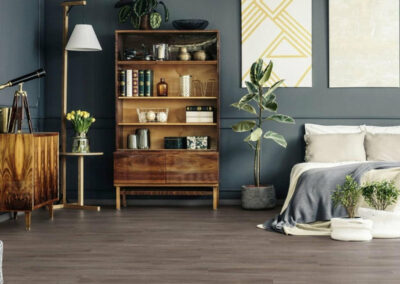
gerflor creation 55 trend – swiss oak smoked 230 x 1500 mm
-

gerflor creation 55 – swiss oak golden 230 x 1500 mm
-
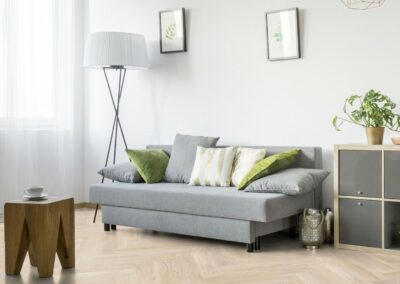
LVT Creation 30 Swiss Oak Beige
-
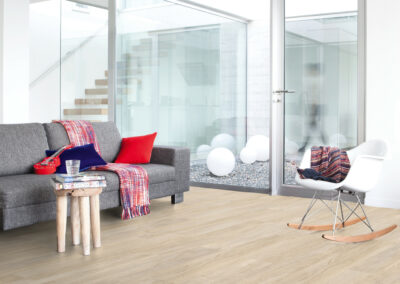
LVT Creation 55 Trend Swiss Oak Beige
-

Creation 55 Clic Mansfield Dark
-
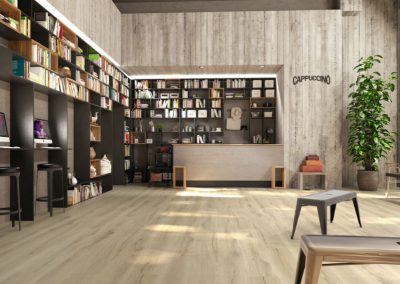
Creation 30 Cedar Pure
-

Above: gerflor creation 30 bostonian oak grey
-
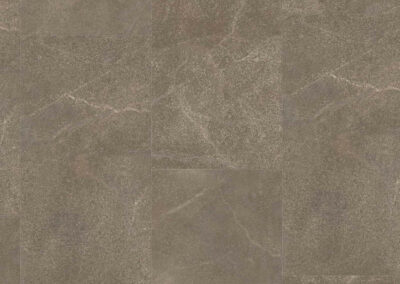
Creation 55 Trend Reggia Taupe
-
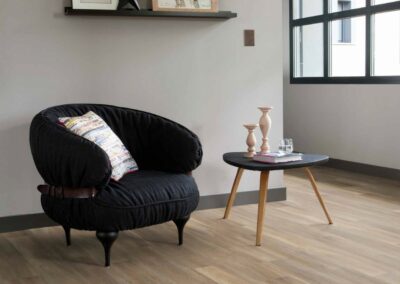
Creation 30 Bostonian Oak
-

Creation 55 Lava Light Vinyl Planks
-
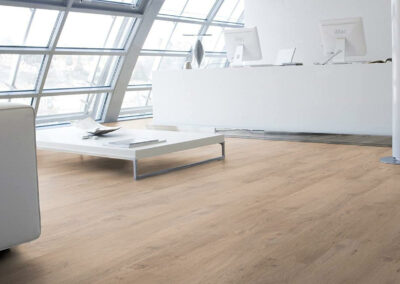
LVT Creation 30 Design Twist
-

LVT Creation 30 Staccato
-

gerflor creation 55 – sweet cloud 610 x 610 mm
Browse more here

